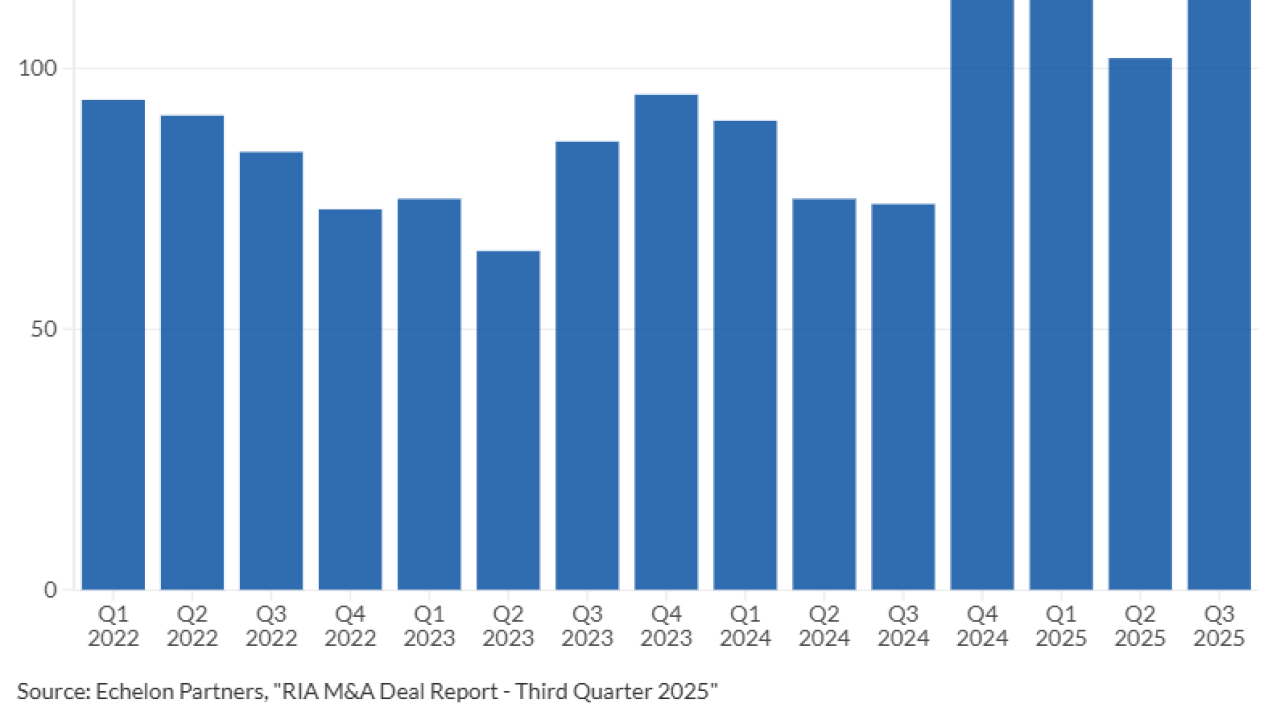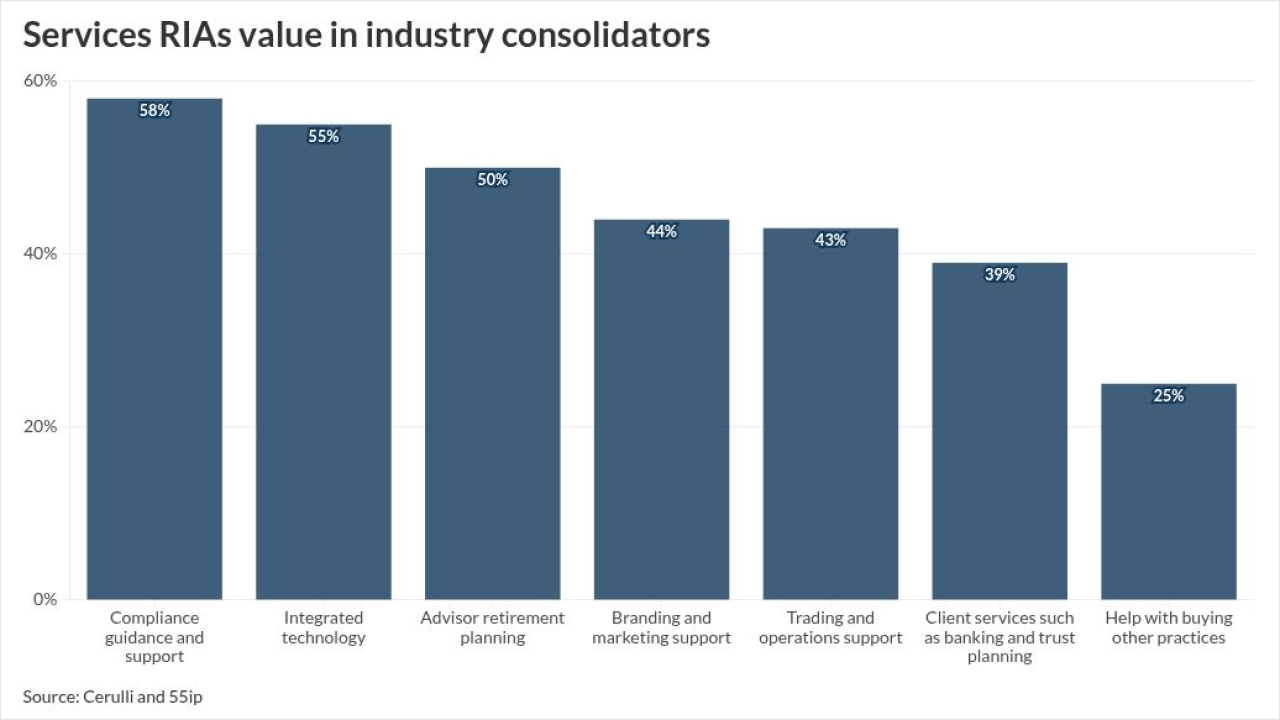One of the most persistent challenges for advisors is to get an accurate gauge of a client’s risk tolerance. That is one focus of Totum, a new platform created by the Los Angeles-based company Totum Wealth.
As the firm’s website notes, Totum means “all, the whole,” in Latin. The name represents the founders’ goals for the platform: to systematically illuminate the multidimensional risks in each client’s life and to generate a suitable, compelling and customized portfolio solution in minutes.
Both of the firm’s founders have experience in risk management and investment management. Min Zhang most recently was employed by Pacific Life, where she was director of investment risk management. Before that, she was an analyst for Pimco. She also helped to create Nutmeg, a consumer-facing robo advisor platform in Britain.
The other founder, Mark Cone, is also a co-founder and managing partner at Causeway Capital Management. He formerly worked as head of third-party distribution at Merrill Lynch Investment Managers and as head of distribution at Hotchkis & Wiley Capital Management.
Totum claims it is different from other tools because it takes a more comprehensive view of risk when creating a personal investment strategy for clients, one that includes a client’s health, his or her balance sheet and the industry in which he or she is employed. In addition, the platform claims to offer institutional-quality portfolio analytics tools.
According to Zhang, Totum is well suited to serve a prospect who is part of the millennial age group. “The next generation of clients demands more from an advisor,” she says.
TEST DRIVE
Totum offers two modules for advisors. The first is holistic risk analysis. The other is a “bespoke portfolio proposal.” Advisors can subscribe to either module for $128 per month per user or to both for $248.
Each module allows you to run an unlimited number of prospects or clients. For enterprises, Totum offers quantity discounts and the ability to integrate Totum with other platforms. For a limited time, a 90-day free trial is available.
To test Totum, I signed up for the free trial of both portfolio proposal modules. Once you log on, you land on a sample client case. You can explore that case or create your own. To create a new client, you simply click the “add client” icon on the upper left of the screen, enter a name and AUM (which apparently means liquid taxable assets only) and then select the module you want. I selected Holistic Risk Context.
I then began entering information, including gender, employment, health, retirement age and marital status. You then type in total assets, liabilities, income and expenses.
Next, you answer a few questions about employment, including industry, sector, years at current position, years at current firm, job stability and skill level. Then, you provide portfolio goals and loss tolerance. In essence, this asks how much downside, in terms of dollars and percentages, would cause you to panic. When you click “next,” a report similar to the one on the next page appears. At the top of the page is a client summary, followed by a personal balance sheet with debt and liquidity ratios. “Risk in context” is interesting. It contrasts a client’s measured risk capacity (how much risk Totum’s analysis indicates the client can take) with the client’s risk preference. These measures don’t always overlap.
“Sector considerations” is a unique indicator. In the example, the client lives and works in an area where consumer discretionary drives GDP. This indicates that the client’s portfolio should diversify away from this sector. The “other considerations” are computer driven. Advisors can edit this or add their own recommendations.
To generate a proposal, start with the existing portfolio. Currently, you have to manually enter this information, but you will be able to aggregate client data soon with Yodlee.
For now, you can start with one of the pre-populated portfolios and modify it. For example, you can use a 60/40 portfolio made up of SPY and AGG, and then click to add assets and type in percentages. Next, select a proposed portfolio with which to compare it. You can create multiple models with different risk characteristics and reuse them. When you click next, you see the typical doughnut graph with current and proposed asset allocations.
Other information includes the risk level of each portfolio, annual yield, estimated income and equity beta. You can also view a risk/return graph that provides the portfolio’s standard deviations, returns and Sharpe ratios. The default time frame is three years, but you can choose other periods. You can also see how the dot-com crash, the recession and other past events would have impacted the portfolio statistics and cumulative returns. The results also contrast the cumulative behavior of each portfolio over time based on a set of assumptions. The analysis includes some analytics that you don’t usually see in this sort of quick and easy proposal-generation tool, such as a risk factor model and projected return contribution by asset class.
INITIAL IMPRESSIONS
There are a few aspects of the Totum platform that I really like. The questions about home location and employment are a welcome addition. These provide insight into sectors of the economy to which the client might already be overexposed. Although it was not indicated in this example, the questions about job stability and tenure can impact recommendations with regard to the size of an emergency fund, debt issues and other liquidity issues.
The interface is, for the most part, welcoming and user friendly. The output screens, graphics and PDF report are well designed. Advisors need to take health into account when modeling longevity and, therefore, need to pay more attention to a client’s health when engaged in planning. Totum’s health questions are a small step in the right direction, but more needs to be done in this area.

A report generated on the Totum platform starts with a client summary, followed by a personal balance sheet and liquidity ratios. The software ultimately enables the advisor to generate a customized portfolio proposal.
SOME ISSUES
There are a few issues that need to be addressed, however. First, there is lack of transparency about the application’s calculations. Advisors need to understand how the results are being calculated.
Integration is a key issue and, as of press time, there is none. For existing clients, advisors have most, if not all, of the data required to populate the modules. They should not have to re-key them. Furthermore, current output is to the screen or PDF only. I’m sure advisors would like Totum to widgetize the output so it can be integrated into comprehensive reports and client portals.
The single question about a client’s loss tolerance is insufficient. Experience tells us this issue needs more probing to provide confidence in the accuracy of the output.
Although most of the screens are self-explanatory, some user guidance would be helpful. To cite just one example, one of the first screens asks for a client’s AUM. It is not clear at the outset what number belongs here. Is it taxable liquid funds only, the total AUM that the advisor is managing, or all of a client’s assets?
Overall, Totum is a promising new addition to the advisor tool kit.
Joel Bruckenstein, a Financial Planning columnist, is co-creator of the Technology Tools for Today conference series and technology guides for advisors. For more information, visit JoelBruckenstein.com. Follow him on Twitter at
Read more:





